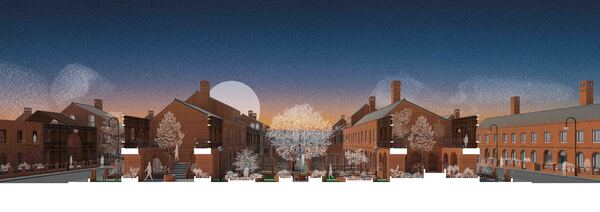How the symbolic memory of the mill alongside industrial housing strategies can create a new standard of urban neighbourhood?”
My thesis project takes the ideas developed for terraced housing in the industrial revolution combined with the live-work relationship created by the mill, modern environmental strategies, alongside the ideas of Architects and figures from the past to create a residential neighbourhood that strives for a new standard of living within the urban industrial setting of Preston.
Studio 1 focused on the Industrial Revolution within Preston and the live-work dynamic of the terrace house. Studio 1 applies the theories used in Aldo Rossi’ “City of the Dead” to the Brookhouse Mill Site. Memory, Journey and Ascent concepts were applied to the mill to create a series of spaces and gardens.
Studio 2 began with a Trip to Hargreaves cast iron foundry which influenced material choices within the project. Future living standards and utopian ideas of the past were analysed to gather information on how the neighbourhood of today can improve. Studio 2 continued with the zoning and master planning of the site along with the development of the modern terrace through a series of sketch studies. Passivhaus strategies were applied to the masterplan and individual housing development.
Studio 3 saw the development of each of the housing types with emphasis on the special housing types and how they integrate themselves into the scheme. The end terrace forms the perimeters of the site with the boulevard house that ties the boulevard to the residential area. A Garden Terrace was created to allow users to move freely around the site and explore these pocket green spaces. The Garden Avenue forms the centre of the site through a series of garden spaces such as the hanging and vertical gardens. These series of houses and garden spaces form the Neighbourhood. Together this forms a scheme which creates journeys and diversity of spaces for the residents to explore.


